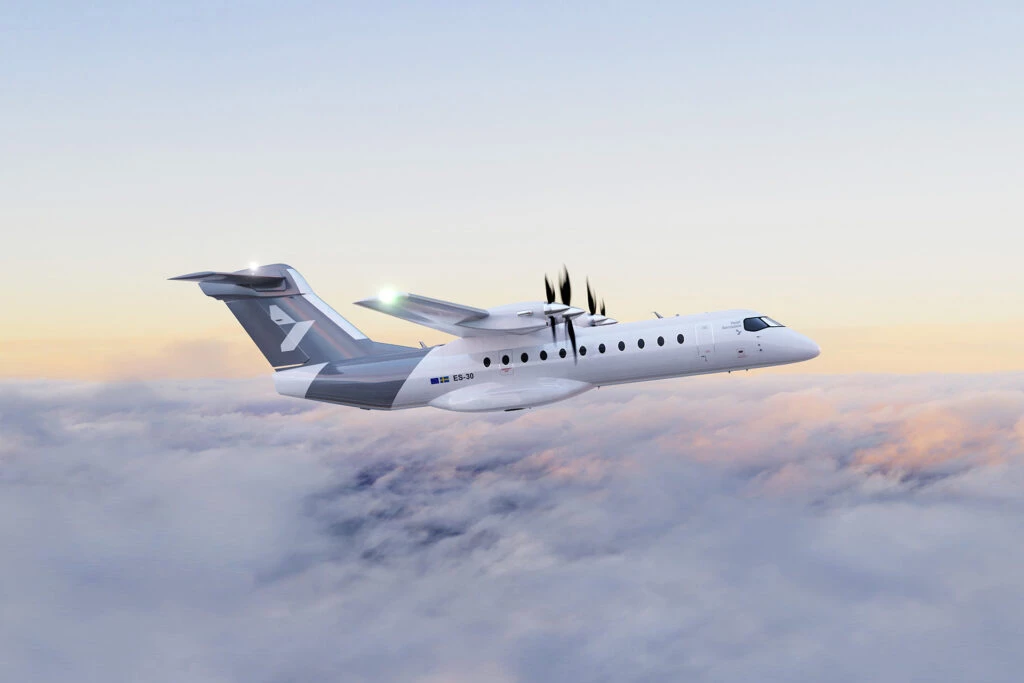Travelers could be making all-electric airline flights as soon as 2028. That's when Heart Aerospace's well-funded hybrid-drive ES-30 is planned to enter service, with a projected battery range of 200 km (124 miles) – or much farther in extended-range mode.
We first heard about Swedish startup Heart Aerospace back in 2021, when the company announced development of its 19-passenger all-electric short-range airliner, the ES-19. That design subsequently morphed into the 30-passenger ES-30, which features a "reserve-hybrid" configuration.
In a nutshell, this means that for flights of up to 200 km (124 miles), the aircraft just uses two electric motors located relatively close in to the fuselage on each wing. For going farther – up to 400 km (249 miles) – two small turboprop engines located farther out on the wings kick in to extend the aircraft's range. When the turboprops aren't in use, their propeller blades are angled to lie parallel to the air flow for better aerodynamics.
One charge of the BAE-Systems-designed batteries reportedly takes just 30 minutes.

As is the case with other electric airliners, the ES-30 is promised to produce fewer carbon emissions than traditional combustion-engine planes, while also reducing operating costs and maintenance requirements.
It will reportedly also be much quieter than its fuel-guzzling counterparts, plus because its electric motors quickly deliver maximum torque, it will be able to take off from runways as short as 1,100 m (3,609 ft) ... with its turboprops helping. With these attributes in mind, the aircraft should be capable of taking off and landing at airstrips in small, currently underserved communities, and at neighborhood "pocket airports" in larger cities.
A number of corporate clients are apparently sold on the concept, as Heart Aerospace has so far raised US$145 million in development funding from high-profile partners such as United Airlines, Air Canada, Saab, the European Investment Council, and Mesa Air Group. The company currently has firm orders for 250 of the aircraft, along with purchase rights for an additional 120 planes, and letters of intent for another 191 on top of that.
The opening of a Los-Angeles-based research and development center was announced this May.
Source: Heart Aerospace
UPDATE (Aug. 1/24): Heart Aerospace has informed us that in the latest design of the ES-30, the batteries have been moved to the rear end of the fuselage.






